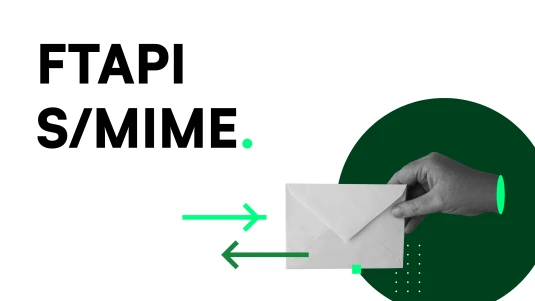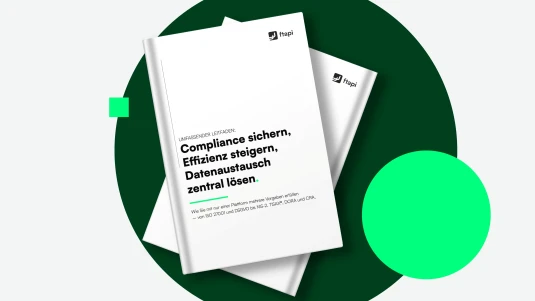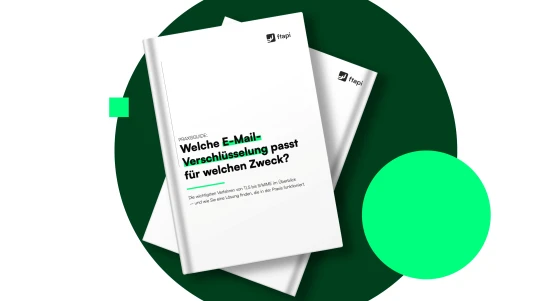De-Mail alternative – what matters now after the shutdown
The end of De-Mail highlights that digital security solutions must be simple, compatible and user-friendly in order to gain acceptance.

It’s now official: De-Mail has been discontinued. After Deutsche Telekom ended its service, the German government also began phasing De-Mail out of public administration from May 2024. The provider 1&1 has also shut down its service.
What does this mean for public authorities, companies and organisations that rely on secure digital communication? And what alternatives to De-Mail are now available?
What was De-Mail – and why was it discontinued?
De-Mail was introduced by the German government in 2011. Its aim was to ensure “secure, confidential and verifiable electronic communication for everyone on the internet.” It was primarily intended for communication with public authorities. The legal basis for the service was the De-Mail Act, which outlined requirements for authentication, transport encryption and traceability.
The solution was “overcomplicated”
Despite significant investment – including, according to its own statements, hundreds of millions of euros from Deutsche Telekom – the service never attracted a substantial user base.
The reasons include:
Technical complexity: De-Mail and standard email were not compatible. Users needed a separate De-Mail address and had to complete a complex registration process. Deutsche Telekom itself described De-Mail as “overcomplicated” (source: faz.net).
Limited integration: Unlike other services, De-Mail could not be integrated into standard email clients or familiar email environments.
Cost structure: Basic functions such as sending, receiving or signing messages were subject to additional charges.
Restricted usability: Communication was limited to other De-Mail addresses. Given the technical effort required, many users felt the benefits did not outweigh the complexity.
The failure of De-Mail clearly illustrates one thing: secure data exchange must be simple and easy to understand if it is to be widely adopted.
Looking for a secure and easy-to-use De-Mail alternative?
With FTAPI SecuMails, you can send securely encrypted emails more easily than ever.
With just one click, directly from Outlook or your browser.
Cumbersome processes deter users
Take email encryption in the context of secure data exchange within public authorities. Most users – whether citizens or employees – value security. New applications are adopted much more readily when they resemble familiar processes and feel like tools people already know.
If that's not the case, and users are faced with a complex, paid registration process along with essential features that also come at a cost, the perceived value quickly drops. The effort no longer seems worthwhile.
A modern alternative to De-Mail
Those now looking for an alternative to De-Mail will find one in FTAPI SecuMails. This solution for secure data exchange with email encryption integrates seamlessly into Outlook. It requires no manual certificate exchange and provides complete end-to-end encryption.
The benefit: Nothing changes for the user – they continue working in their familiar environment while sending any email or large file securely and encrypted.
De-Mail compared to FTAPI SecuMails
FTAPI SecuMails focuses on secure communication that works simply in everyday practice – without detours or technical barriers.
Here’s where the key differences from the now-discontinued De-Mail become clear:
Integration: De-Mail required a separate mailbox. FTAPI SecuMails integrates directly into Outlook and works smoothly in the browser – no extra software needed.
Compatibility: De-Mail could only be used with other De-Mail addresses. FTAPI works with any standard email address – internal or external.
Ease of use: Registering for De-Mail was time-consuming. FTAPI works without certificate exchange and enables encrypted sending with a single click.
Security: De-Mail relied on transport encryption. FTAPI protects both content and attachments with genuine end-to-end encryption.
File transfer: De-Mail had limits on file size. FTAPI allows large files to be sent securely via email, directly from Outlook or the browser.
Use cases: De-Mail was primarily designed for communication between public authorities. FTAPI is suitable for authorities, companies and organisations alike – wherever secure data transfer is needed.
There are now user-friendly alternatives that can be easily integrated into day-to-day work. They require no complex add-on systems, work within existing email environments and still provide a high level of security.
FAQ – De-Mail at a glance
De-Mail was an email service based on the German De-Mail Act, designed to enable legally secure and traceable digital communication – particularly between citizens and public authorities.
A De-Mail mailbox was a dedicated account with its own De-Mail address. It could only be set up after identity verification (e.g. at a post office or using online ID) and was limited to communication with other De-Mail users.
Messages were sent via certified providers and encrypted at transport level. De-Mail messages were considered legally delivered – similar to a digital registered letter – but only within the De-Mail system.
Yes. Deutsche Telekom shut down its service in 2022. The 1&1 De-Mail GmbH – responsible for WEB.DE and GMX – also ended support, with the last mailboxes deactivated in October 2024. In parallel, the German government phased out its use of De-Mail in public administration. As of February 2025, De-Mail is fully decommissioned.








